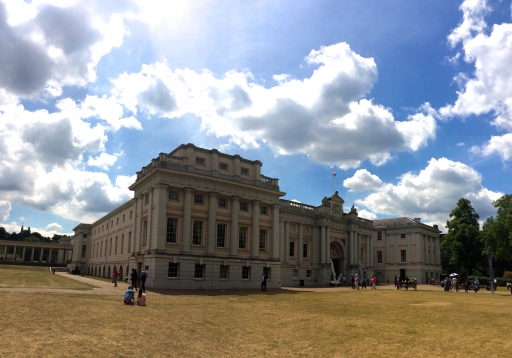A bugle presented to a boy sailor wounded at Jutland will be among the objects going on display in a forthcoming centenary exhibition at the UK’s National Maritime Museum in London.
‘Jutland 1916: WWI’s Greatest Sea Battle’ opens for a two-year run at the historic Greenwich site on May 20th 2016.
In its latest update, the museum says: “Through photographs, newspaper clippings and quotes from official communiques, Jutland 1916 relates the public sentiments in both Britain and Germany in the immediate aftermath of the battle, and how it eventually became clear that neither could claim a decisive victory.”
Among accompanying events, artist-in-residence Paddy Hartley will explore the lives of sailors affected by devastating facial injuries in conflict, including two Jutland veterans who underwent pioneering reconstructive surgery.
HMS Queen Mary
The exhibition will consider the lead-up to the clash of 250 warships in the North Sea and the experiences of those on both sides who found themselves in the thick of the fighting off the Danish coast.
Visitors will be greeted with a visible reminder of the scale of the casualties – in the shape of a 14-foot-long (4.2m) shipbuilder’s model of HMS Queen Mary, the British battlecruiser sunk on May 31st 1916 with the loss of more than 1,200 crewmen.
Jutland 1916 aims to go beyond the battle and uncover stories of the aftermath, from the viewpoints of the nations and their navies, to personal accounts left by sailors and their families.
“Those who remained at home were deeply affected by the outcome of the battle – none more so than the families of those who were lost,” the National Maritime Museum explains.
“The exhibition traces individual stories through personal testimonies, notably those of the widows of the action who set up support networks and memorials funds and the sailors involved in the battle itself”.
A silver bugle presented to a boy sailor who stayed at his post despite being severely wounded by shrapnel will be among the exhibits.
William Walker was visited by King George V while recovering in hospital.
He received the bugle for his actions on HMS Calliope from the British commander-in-chief at Jutland, Admiral Sir John Jellicoe.
Shattered
“Despite being the biggest naval surface engagement to date, Jutland was one of the most keenly-felt disappointments of the war”, the National Maritime Museum states.
“The exhibition uncovers how the belief that the war would be won in one decisive, glorious sea battle was shattered in the aftermath of Jutland – a marked contrast from the patriotic sentiments expressed ahead of the battle – and tactics from Germany shifted to the unrestricted U-boat warfare in the latter years of the First World War”.
To coincide with ‘Jutland 1916’, the National Maritime Museum will be hosting a dedicated events programme, including a Lecture Series and walking tours. From June 2016, artist- in-residence Paddy Hartley will explore the lives of sailors affected by devastating facial injuries from conflict, including William Vicarage and Walter Yeo, two Jutland veterans who underwent pioneering plastic surgery.
‘Jutland 1916: WWI’s Greatest Sea Battle opens at the National Maritime Museum, Greenwich on May 20th 2016 and continues until November 2018.
